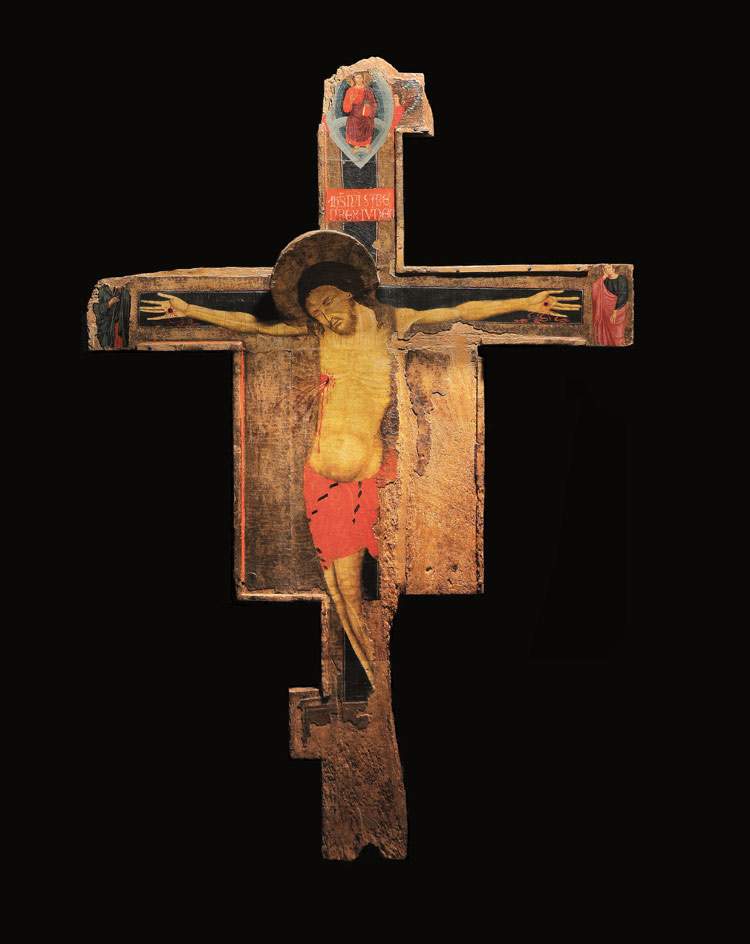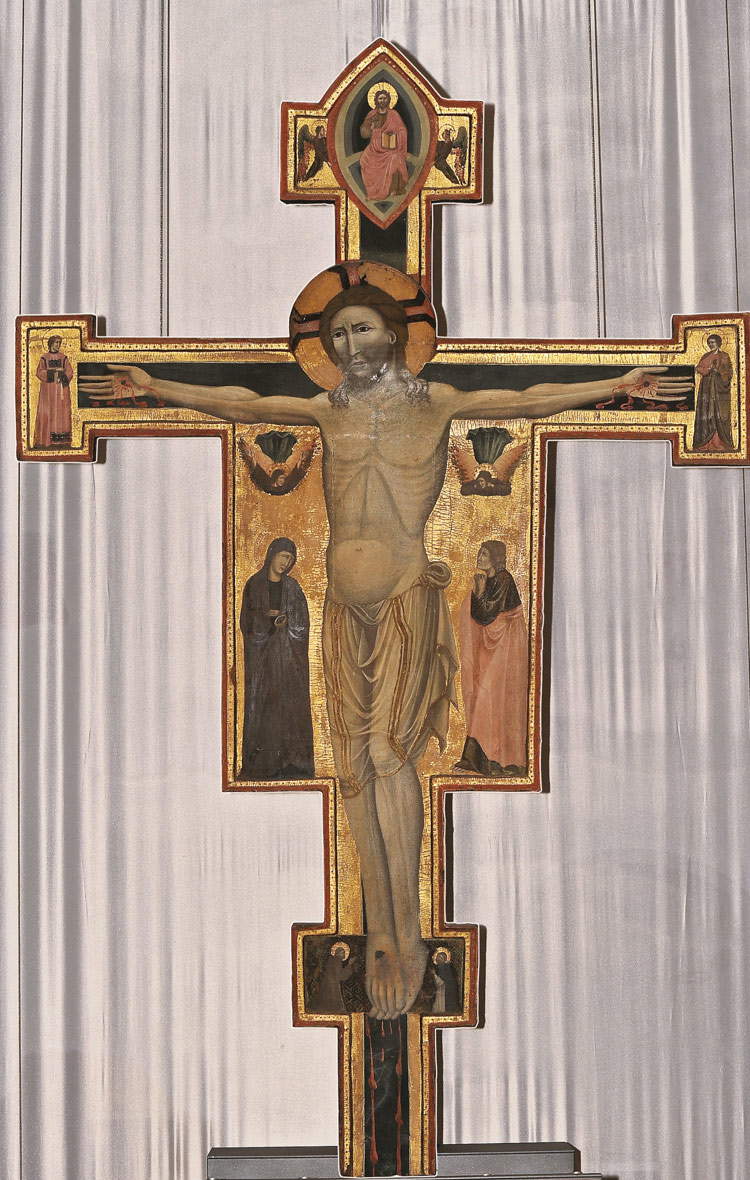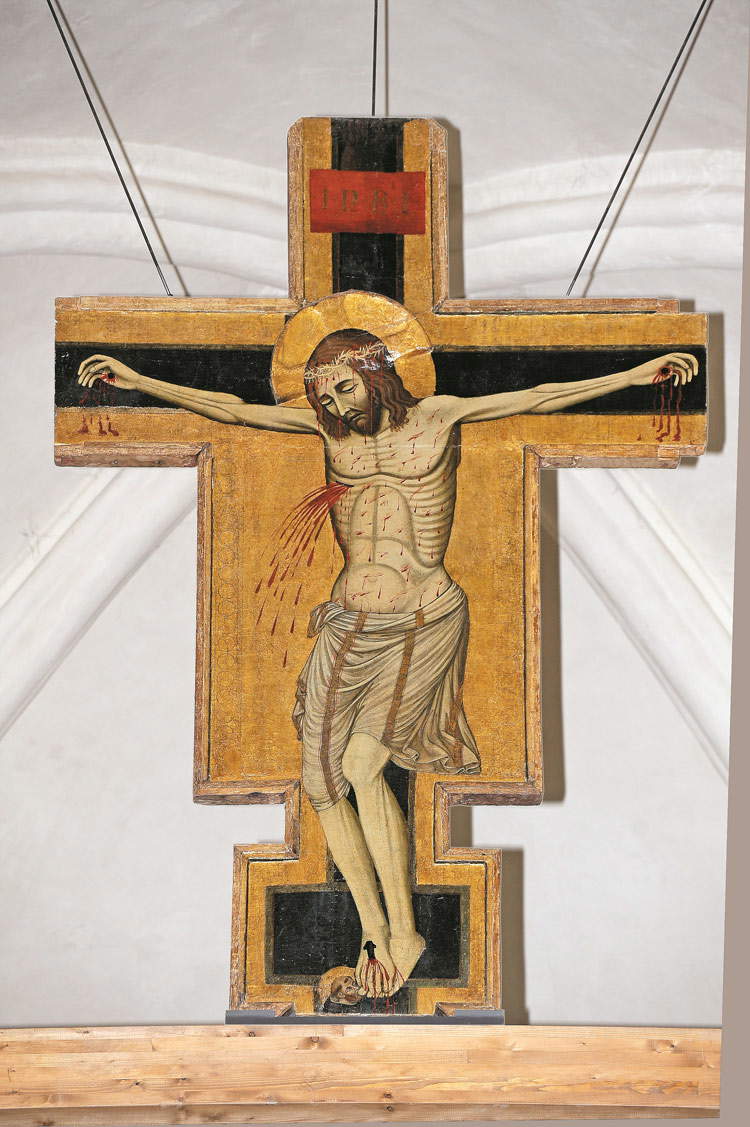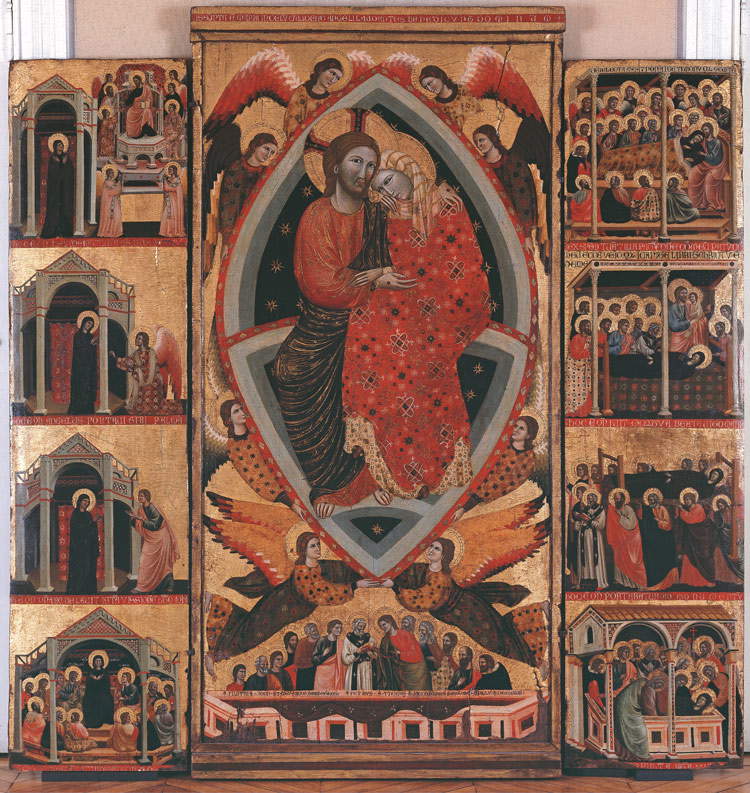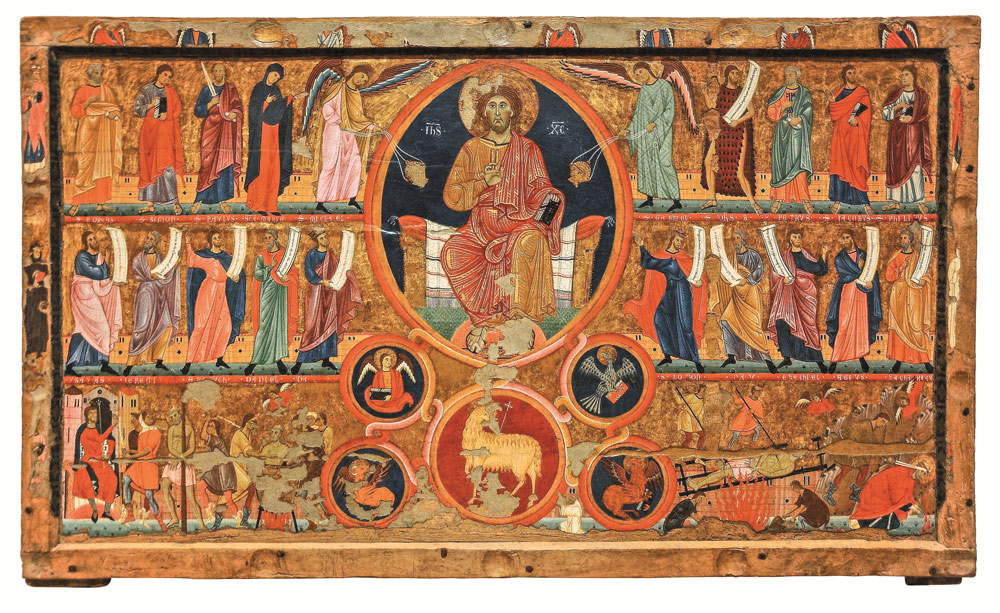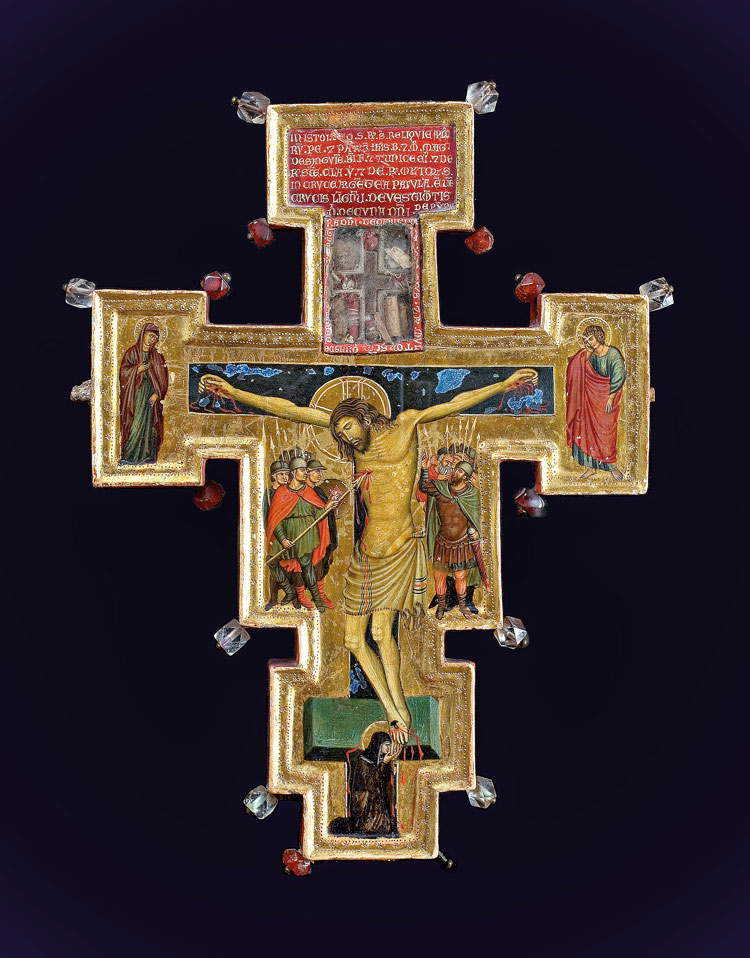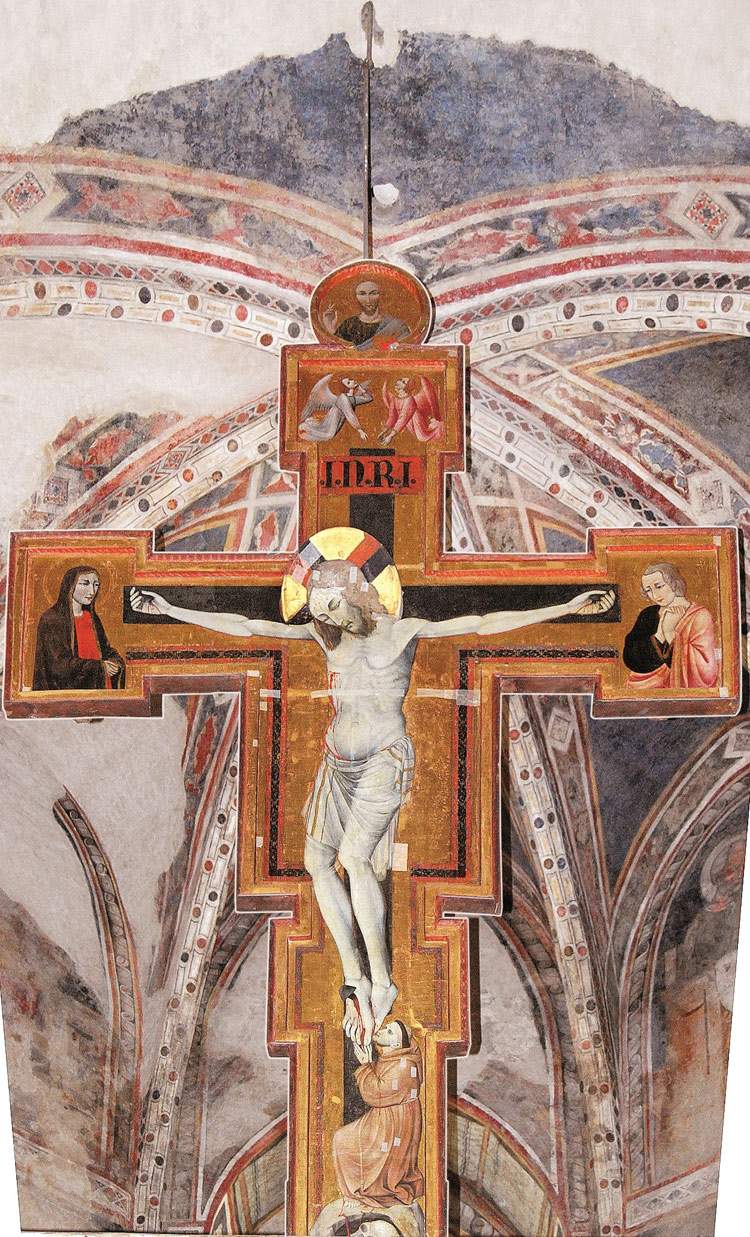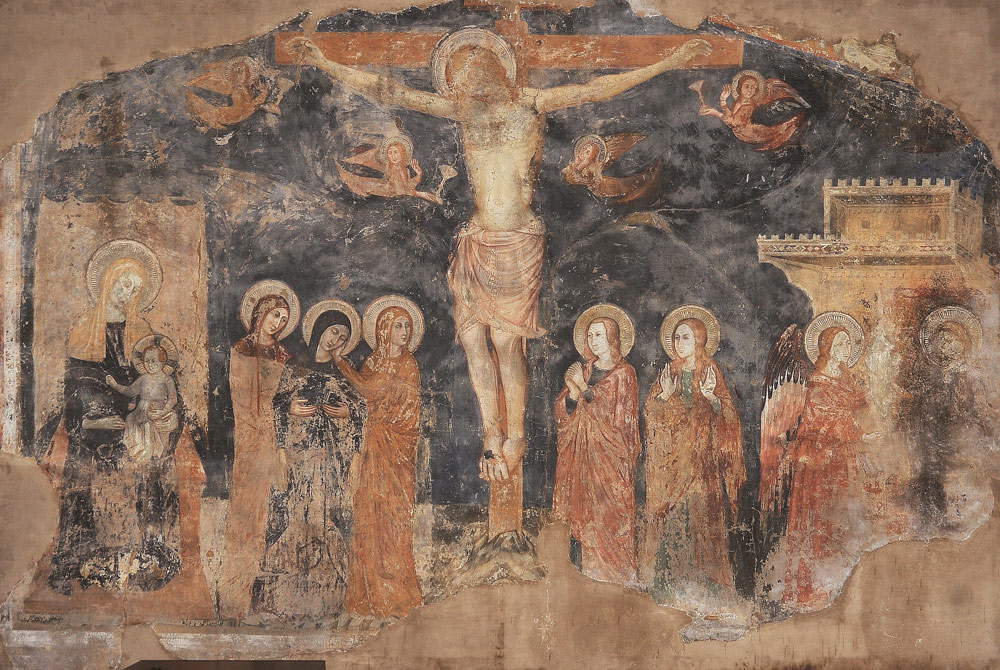by Redazione , published on 02/07/2018
Categories: Exhibitions
/ Disclaimer
In Umbria, the exhibition 'Masterpieces of the Fourteenth Century. Giotto's Worksite, Spoleto and the Apennines' showcases large, little-known masterpieces. Here is an overview of the works
It opened in Umbria, in the four locations of Montefalco (Museum Complex of San Francesco), Spoleto (Diocesan Museum - Basilica of Sant’Eufemia and Rocca Albornoz - National Museum of the Duchy of Spoleto), Trevi (Museum of San Francesco) and Scheggino (Spazio Arte Valcasana), the major exhibition Capolavori del Trecento. Giotto’s Worksite, Spoleto and the Apennines, curated by Vittoria Garibaldi, Alessandro Delpriori and Bernardino Sperandio. From June 24 to November 4, 2018, the four Umbrian cities are thus the site of a widespread exhibition featuring seventy works including gold backgrounds on panel, polychrome lingee sculptures and miniatures: the aim is to recount the developments of Umbrian art in the 14th century, in the wake of the innovations introduced by Giotto during his stay in Assisi, and then spread to the rest of the region. Churches, palaces, parish churches, hermitages: there were many places and buildings touched by the new art, and the exhibition, by bringing often little-known masterpieces to the public’s attention, aims to document the evolution of 14th-century art in the region.
“An exhibition to learn about and be amazed by,” the curators assure. Below is a selection of ten masterpieces in the three main venues of Spoleto, Trevi and Montefalco. The following texts were provided by the exhibition. More information can be found here.
1. Spoleto
In Spoleto, the Diocesan Museum of Spoleto preserves many works that testify to painting and wooden sculpture in this area from the mid-13th century until the 1950s. The exhibition section, which displays masterpieces by the Master of Cesi and the Master of San Felice di Giano, complements the display in the church of San Francesco in Trevi. Of particular importance are the “Triptych with Coronation of the Virgin” by the Master of Cesi from the Marmottan Monet Museum in Paris and the Paliotto by the Master of San Felice di Giano from the National Gallery of Umbria. The relationship between wooden sculpture and polychromy, so important for the fourteenth century in Spoleto, will be investigated in a circumstantial way, so as to relate sculptors and painters who might have been in the same workshop, if not even matching the same person.
As for the Rocca Albornoz - National Museum of the Duchy of Spoleto, the section presents the antecedent of 14th-century Spoleto painting, before Giotto’s revolution, preceded by the painters present in the Assisi workshop at the time of Cimabue’s arrival. In particular, the Master of the Palazze, who has his cultural roots in the Spoleto tradition and together represents the moment of generational change between the painters of the thirteenth century and those who turned art “from Greek to Latin.” The anonymous artist left on the walls of the church of Santa Maria Inter Angelos or of the Palazze, located on the slopes of Monteluco, a mural cycle of sacred subject of particular interest, created at the end of the 13th century. Bruno Toscano emphasized their characters with a strong Cimabuesque accent and linked their chronology with the Florentine painter’s presence in Assisi, which is, however, not supported by certain dates, but on the eve of Giotto’s arrival. Around 1920 most of the frescoes were detached, and between 1924 and 1931 some of them were acquired by five American museums (Museum of Fine Arts in Boston, Glencairn Museum in Bryn Athyn, Fogg Art Musem of Harvard University in Cambridge, Wadsworth Atheneum Museum of Art in Hartford, and Worcester Art Museum). In 1964, one of the surviving scenes was detached, and five pieces of the frescoes that remained in situ flowed into the National Museum of the Duchy. The project involves a life-size virtual recomposition of the placement of the frescoes in one of the halls of the Rocca, through a graphic layout and black-and-white images of the frescoes, now preserved in American museums.
 |
| Master of Sant’Alò, Crucifix (tempera on panel; Trevi, Art Collection of San Francesco) |
 |
| Master of Cesi, Christ Triumphans (tempera on panel; Spoleto, Rocca Albornoz - National Museum of the Duchy of Spoleto, tempera on panel) |
 |
| Master of Cesi, Crucifix (tempera on panel; Spoleto, Church of San Domenico) |
 |
| Master of Cesi, Coronation of the Virgin and Stories of the Death of the Virgin (tempera and gold on panel; Paris, Marmottan Monet Museum) |
 |
| Master of San Felice di Giano, Paliotto of the Master of San Felice di Giano. Christ Blessing Enthroned, Apostles, Prophets, Evangelists and Stories from the Life of Saint Felix (tempera and gold on panel; Perugia, National Gallery of Umbria) |
 |
| Master of San Ponziano, Madonna of Belfiore (polychrome sculpture; Spoleto, Rocca Albornoz - National Museum of the Duchy of Spoleto) |
 |
| Master of Sant’Alò, double-sided reliquary cross (tempera and gold on panel; Spoleto, Rocca Albornoz - National Museum of the Duchy of Spoleto) |
2. Trevi
In the Church of San Francesco, adjacent to the Pinacoteca Comunale, is preserved a splendid and gigantic shaped cross datable to around 1317. It is an extraordinary work of conservation and quality, painted by one of the major protagonists of that season, the Master of the Cross of Trevi (named after his most representative work), the same beloved of Roberto Longhi who baptized him as Master of 1310. The latter undoubtedly participated in the Assisi decoration and was probably active as early as the end of the 13th century, precisely parallel to Giotto’s presence in Umbria. The Trevi work is symptomatic of that moment, it has within it all the strength of the Tuscan painter, but also the local expressiveness, the ability to speak to the viewer, the consciousness of a direct message to those who looked at it. To go to study the Master of the Cross of Trevi and the painters and wood sculptors (who in some cases might match each other) active in and around Spoleto at the end of the thirteenth century and the beginning of the following century is to reconstruct for the first time a tattered and in large ways lost fabric, but one of exceptional quality. It means being able to review a new and for that territory strongly identifiable artistic panorama. In the same venue will be exhibited the corpus of works by the Master of Fossa, a very high personality capable of moving downstream of Giotto’s culture, but grafted with the grace of Simone Martini in perfect parallel with Puccio Capanna. A true and great artist of Spoleto in the mid-14th century, the Master of Fossa is a beacon for all art to follow right into the 15th century. The whole unfolding of local painting is based on his teaching, from the possible Bartolo of Spoleto, the so-called Master of the Calvaries, to the beginnings of Giovanni di Corraduccio.
 |
| Master of the Cross of Trevi, Crucifixion of St. Francis (tempera and gold on panel; Trevi, Art Collection of St. Francis) |
 |
| Master of Fossa, Crucifixion (detached fresco; Trevi, Raccolta d’Arte di San Francesco) |
 |
| Maestro di Fossa, Madonna di San Silvestro (polychrome sculpture; L’Aquila, Museo Nazionale d’Abruzzo) |
3. Montefalco
Three very important 14th-century works, of which the town was deprived by Napoleonic spoliations and the dispersal of the movable heritage that followed, return to Montefalco: the large dossal that was on the high altar of the Church of San Francesco, the work of the Maestro di Fossa, splendid as a Simone Martini work; the panel for the altar of the Chapel of Santa Croce in the Church of Santa Chiara in Montefalco, the extreme work of the most Giottesque of the Spoleto painters, the Maestro di Cesi; and the processional banner with the Passion of Christ, also originally in the Church of San Francesco in Montefalco. The exhibition is an opportunity to reconstruct, in a virtuoso operation, the original contexts and give the visitor an account of the extraordinary 14th-century season experienced by the town.
 |
| Master of Cesi, The Crucifixion and Stories of St. Blaise and St. Catherine (tempera and gold on panel; Rome, Vatican, Pontifical Apartment of Representation) |
 |
| Master of Cesi, Stories from the Passion of Christ (tempera and gold on cuspidate panel; Rome, Pinacoteca Vaticana) |
Pictured below: Trevi, the museum complex of San Francesco
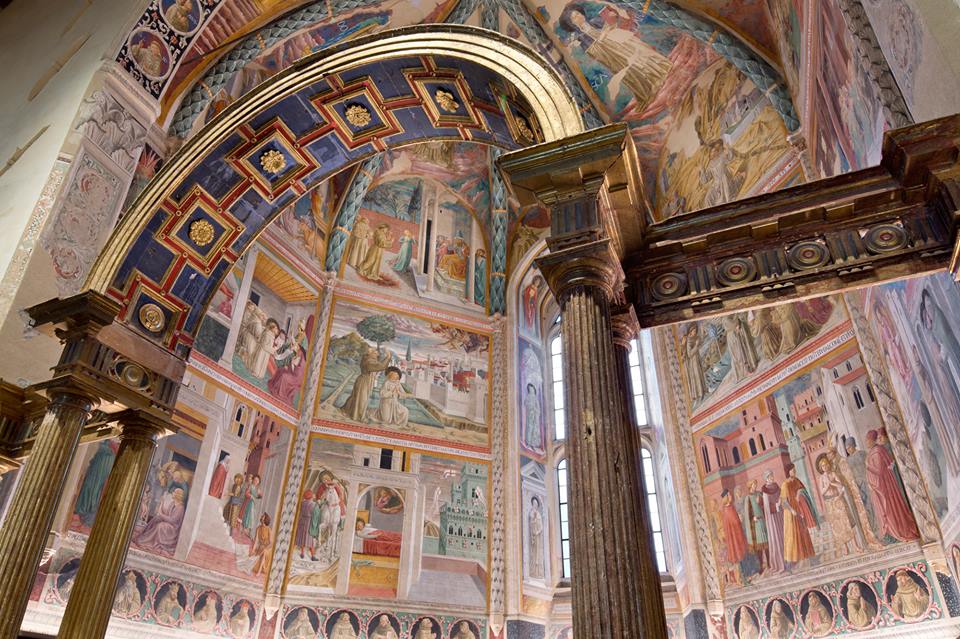 |
| The hidden wonders of the 14th century in Umbria. Here are photos of the masterpieces on display |
Warning: the translation into English of the original Italian article was created using automatic tools.
We undertake to review all articles, but we do not guarantee the total absence of inaccuracies in the translation due to the program. You can
find the original by clicking on the ITA button. If you find any mistake,please contact us.
